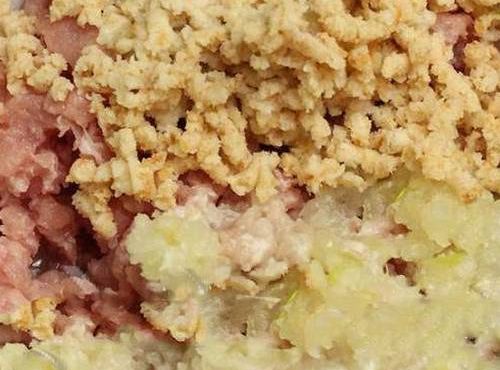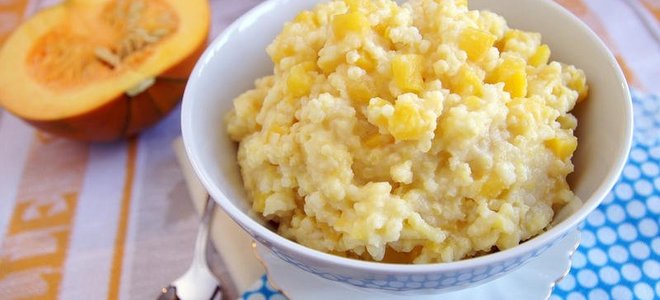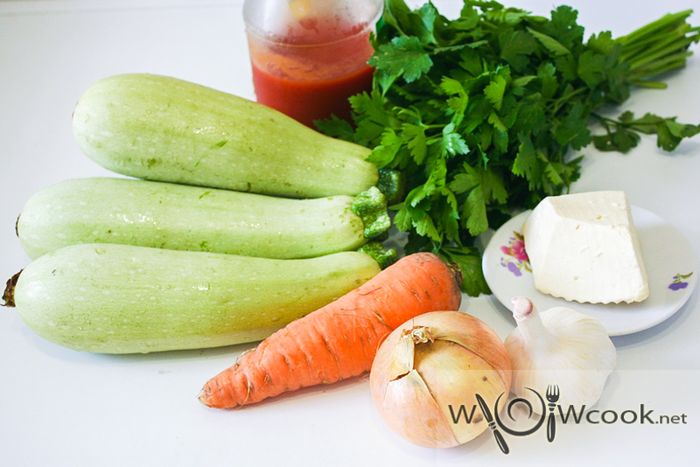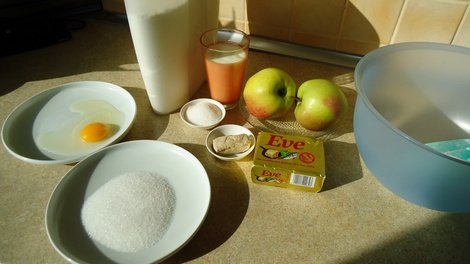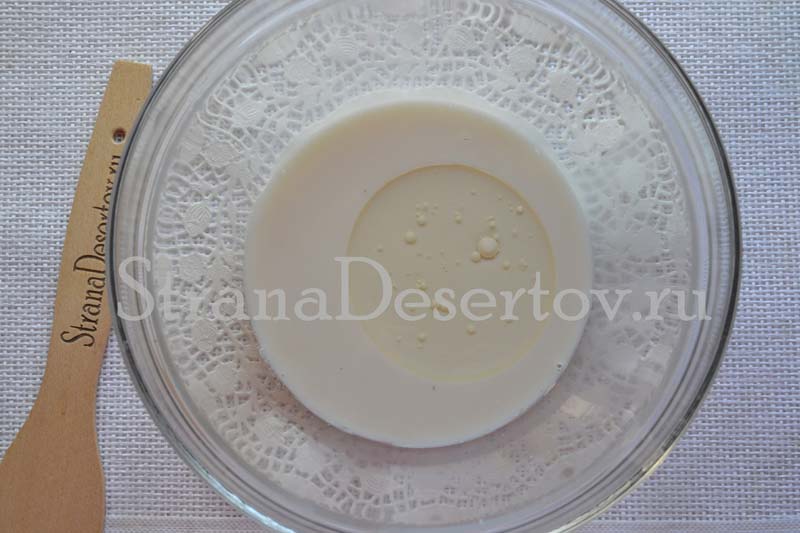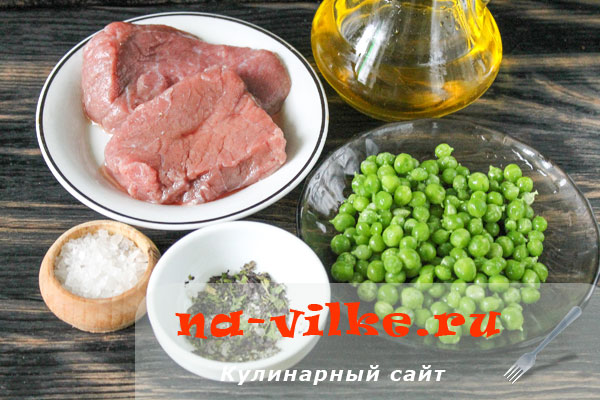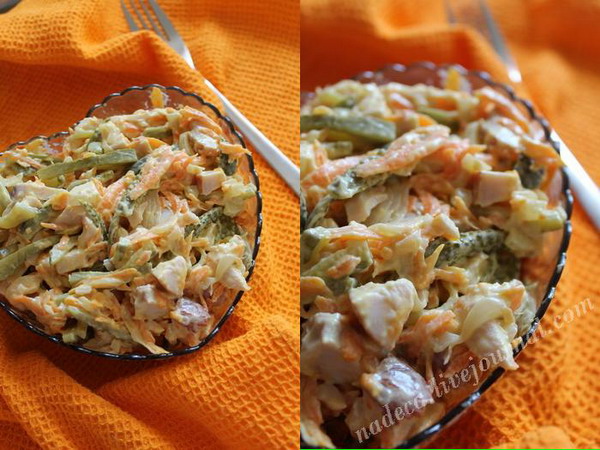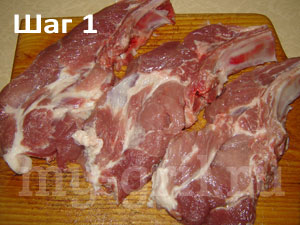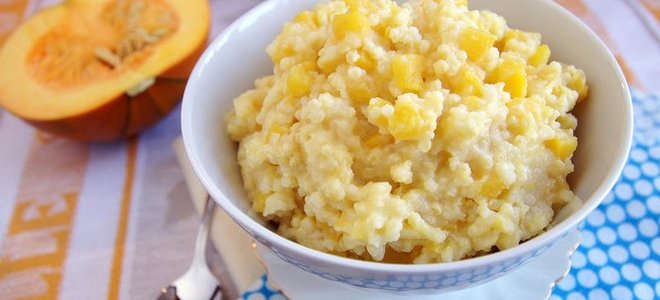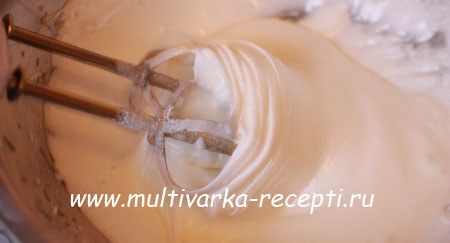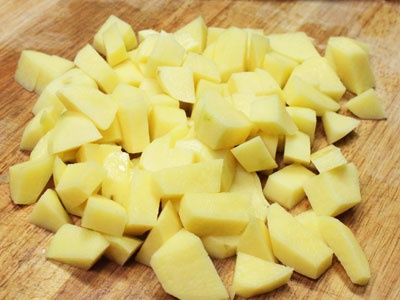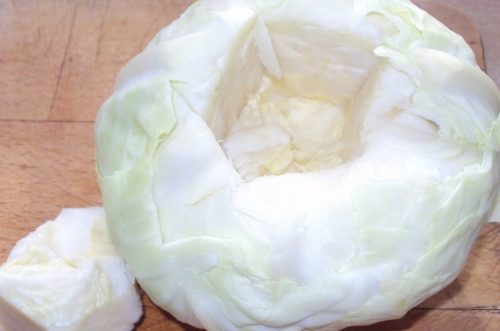Rapeseed fat. Useful information about rapeseed oil: harm and benefits, contraindications, medical recipes
The content of the article:
Rapeseed oil is a type of vegetable oil that is obtained from an herbaceous plant of the Cabbage family - rapeseed (Brassica napus), namely from its seeds. Despite the fact that the culture has been known for more than 6 thousand years, in its wild form it practically does not occur. It is assumed that this plant arose due to the crossing of garden cabbage and superica. Most botanists consider Europe to be the birthplace of the plant - England and Holland. In the XVI century, it spread to Germany, Poland and Ukraine. In Russia, the cultivation of rapeseed began in the 19th century. Plants reach a height of 2 m. The stem is straight, with a large number of branches. The leaves are thin, blue-green or purple. The flowers are bright yellow, small, collected in inflorescences. The fruits are small, collected in pods. There are two main types of plants - winter and spring, that is, two-year and annual. Most actively grown in India, China, Ukraine and the EU. Rapeseed has been widely used in the food industry.
Composition and calorie content of rapeseed oil
Rapeseed oil is not very deservedly deprived of attention by both housewives and those who lead a healthy lifestyle. A more detailed study of the composition of this product will help to verify this.
Caloric content of rapeseed - 899 kcal per 100 g of product, of which:
- Fats - 99.9 g;
- Water - 0.1 g.
Many useful properties of rapeseed are embedded in the vitamin composition of the product. 100 g of oil contains 126% of the daily intake of vitamin E, which improves vision, normalizes hormonal levels, copes with mood swings and prevents muscle weakness. The high content of vitamin PP, NE prevents the development of nausea and heartburn, weakness, dizziness, apathy, and insomnia. To a small extent, but still there are vitamins B1 and B2 in the product, which accelerate metabolism, participate in hematopoiesis, support vision and the nervous system.
The content of phosphorus in the product is high, the lack of which can lead to sleep disturbances, decreased muscle tone, brittle bones, poor appetite, a sense of anxiety and fear, disturbances in the functioning of the heart, and problems with blood formation. Magnesium will help to avoid symptoms such as dizziness and headaches, arrhythmia, poor memory, low concentration of attention, cramps, pain in the hands, feet, muscles, heart. Calcium is necessary for our body to solve problems with brittle bones and tooth decay, normalizing the body's water balance. A huge role in our body is assigned to potassium. It reduces the risk of nervous exhaustion, dry skin, brittle nails and hair. Iron has an indispensable role in hematopoiesis, and sodium helps calcium maintain water balance, is responsible for enhancing the synthesis of enzymes, and normalizes healthy muscle contraction.
The following acids are also present in the oil:
- Palmitic. Participates in the synthesis of collagen, elastin and hyaluronic acid, which are responsible for the regeneration and beauty of the skin. It is the main component of breast milk. It triggers digestion, helps in the absorption of calcium.
- Stearin. It is synthesized from palmitic acid, it is an energy store, but at the same time it provokes an increase in the number of cholesterol plaques.
- Oleic. Resists the occurrence of neoplasms, improves the digestive tract, nervous and cardiac systems.
- Linoleic. It accelerates growth processes, regulates hormones and water balance, accelerates metabolism.
- Linolenic. Reduces the risk of cancer, heart disease, supports brain activity.
- Erukova. This component is a poison for the human body, destructively affecting systems and organs. However, today rape varieties have been bred, which contain a minimal amount of this acid. It is possible to reduce its content in the manufacture of oil.
Useful properties of rapeseed oil

Such a high-calorie product, few can name useful. But in vain. The composition of vitamins, micro and macro elements, as well as acids allows you to have a very positive effect on the human body. By regularly consuming oil in reasonable amounts, you will experience the benefits of rapeseed in the following healing effects:
- Normalization of the neuropsychiatric state. Memory impairment, distraction, decreased attention span, severe fatigue, excessive irritability, lack of interest in life, and many other disturbing symptoms of this nature may not indicate real problems in your life that require corrective action of neuropsychiologists, but a banal lack of nutrients. It turns out that bringing to depression more often than not difficult life circumstances, but improper nutrition can. An oil containing a huge amount of useful substances will help to cope with apathy, insomnia, bad mood, headaches. Improves the body's resistance to stress, activates brain activity, improves memory.
- Vascular improvement. This is due to a slowdown in the mechanism of thinning of their walls, an increase in clearance, as well as prevention of the formation of cholesterol plaques. It is interesting that some components of the oil, on the contrary, contribute to the deposition of cholesterol, while others interfere. Fortunately, there are more useful components that have a positive effect on blood vessels in the product, so you can safely say that in this part you will find healing. It will consist in the normalization of blood pressure, the prevention of strokes and heart attacks, atherosclerosis and other dangerous diseases.
- Tumor Prevention. It concerns both benign and malignant neoplasms. And to a greater extent, rapeseed oil protects women - their reproductive system, mammary glands, as it contains estradiol - a hormone due to which the maternal instinct wakes up. This component also helps to safely conceive the fetus and bear the child with the least damage to the health of the woman in childbirth.
- Improving the digestive tract. This happens due to the improvement of metabolic processes, the acceleration of the production of enzymes, the better digestion of food, the absorption of nutrients from it and the removal of harmful substances, as well as the removal of excess water and toxins, while blocking the washing out of healthy salts from bones and organs.
- Strengthening hair and nails, improving skin condition. Extracts from rapeseed oil are actively used in cosmetology, as they help make the skin more elastic, less susceptible to time and harmful environmental influences (wind, sun, poor ecology, poor nutrition and consumption of untreated water). The product also strengthens the hair, making it thicker, shiny and silky, and nails less brittle. The effect can be enhanced if you not only use cosmetics with rapeseed, but also saturate the body with useful components from the inside, nourishing the skin, hair and nails at the cellular level.
Contraindications and harm of rapeseed oil

However, this product has not only useful, but also harmful properties. The harm of rapeseed, as mentioned above, lies in the content of erucic acid in it.
This component can have a very damaging effect on the liver. In addition, erucic acid, since it is not processed by the body, but is deposited in the tissues, can slow the process of sexual development in adolescents, blocking the production of hormones necessary for this. As we also noted, breeders managed to develop varieties containing the smallest amount of this component, but we do not recommend completely ignoring the danger.
- Children. May cause significant harm to the liver and the entire imperfect digestive system of the child.
- Teens. The risk is hormonal imbalance and interference with puberty.
- Having liver problems. This is especially true for those who suffer from chronic ailments of the liver and gall bladder. Harmful components can be toxic deposited in the body’s main filter and cause gallstones to form.
- Food allergy sufferers. Any oil is a strong allergen, so you need to introduce it into the diet gradually. It concerns all consumers, and especially for allergy sufferers.
How to use rapeseed oil

To minimize the harm of erucic acid, you need to learn how to choose rapeseed oil. The label must contain information about how much acid is in the product. The norm is considered an indicator from 0.3% to 0.6%. If higher, we do not recommend using this oil as a food.
Pay attention to the expiration dates of the product. It’s not worth taking oil with a border date, no matter what discounts sellers seduce you.
Also pass by a product having a precipitate and cloudy structure. The color of the oil should be amber yellow, transparent, and the smell slightly reminiscent of peanuts. The hydrogenation of the product is undesirable, as this makes the molecular structure unstable.
The oil will bring the most benefits if consumed in its raw form. However, you can use it for cooking, subject to heat treatment. Only provided that the cooking temperature is not higher than 160 ° C. When the temperature exceeds this mark, toxic substances begin to be synthesized in the oil. Use the same amount to fill salads as if you were using olive or sunflower oil. But when baking this product, you need a little less because of its tighter structure.
It is better to store it in a glass container. Therefore, buying in plastic, do not be too lazy to overfill and tightly close. Then put in a cool place where there is no direct sunlight. These are also the basic rules for storing rapeseed and all derivatives of a given plant.
Rapeseed Oil Recipes

The vegetable oil we are talking about today adds piquancy to dishes, making them more tender and aromatic. We offer you great recipes that even the most sophisticated gourmet will appreciate:
- Winter soup. A great first course option for a cold winter evening. Pour 2 tablespoons of sunflower oil into a deep saucepan, fry finely chopped large onion and 2 grated carrots on them. When the vegetables are podgolot, throw a small head of cauliflower, sorted into small inflorescences, and 5-6 medium diced potatoes. Fry for a couple of minutes, pour 2 liters of vegetable broth and cook until the vegetables are soft. Drain, beat everything with a blender, put the broth back, whisk again, add 2 tablespoons of rapeseed oil, mix well. Serve with croutons, sprinkling soup with finely chopped parsley and a pinch of sesame seed.
- Beef goulash. Thanks to rapeseed oil, traditional Bulgarian goulash will acquire a very delicate taste and aroma. Take 500 g of beef goulash, fry over medium heat with onions until a golden crust appears on the onion. Pour the vegetable broth so that it barely covers the meat. Simmer an hour over low heat. When the meat is ready, add 8-10 potatoes, 2-3 carrots in half rings, diced into it. Add the broth again so that it covers all the ingredients, let it boil and simmer for 15-20 minutes. 5 minutes before the end of cooking, salt, pepper and add 2 tablespoons of tomato paste or 100 ml of tomato juice. After cooking, add 2 tablespoons of rapeseed oil, mix, let it brew for 5-10 minutes with the lid closed, serve.
- Chicken breast on a vegetable pillow. This dish is not only delicious, but also very healthy. Wash the chicken fillet, dry it with paper towels, salt, pepper, grate with paprika and fry over high heat using olive oil. Take a small bunch of basil and parsley, separate the stalks, chop in a blender with 1 clove of garlic, 1 tablespoon of capers and 4 tablespoons of rapeseed oil, salt and pepper the sauce. Pour finely 200 g of salad mix, cut into 200 g quarters of cherry tomatoes, season them with the following dressing: mix with a whisk 3 tablespoons of canola oil, 2 tablespoons of apple cider vinegar, 1 teaspoon of Dijon mustard, a pinch of salt and sugar. On a seasoned mix of cherry leaves, lay the chicken fillet cut into pieces. Serve with green sauce.
- Turkey pie. Any poultry meat - turkey, chicken, goose, etc. is suitable for share. If you have left meat after the holidays - feel free to use it, if you start from scratch, then you need to take 700 meat and bake it in the oven or fry in a pan. Then cool and cut into cubes. Add to it 150 g of also chopped ham. In a pan, fry 300 g of leek rings in olive oil, pour 2 tablespoons of wheat flour, brown it, stirring constantly, pour in 400 ml of milk, stir well and let the ingredients combine for 1-2 minutes. Put the meat and ham in a baking dish, fill it with onion and milk filling, add a bunch of finely chopped parsley, add 2 tablespoons of rapeseed oil and 1 tablespoon of mustard, mix well. Close the pie with several sheets of pleated filo dough, grease it with rapeseed oil, scatter 1 tablespoon of cranberries and bake in the oven at a temperature not exceeding 160 ° C for 25-30 minutes until the dough turns golden. Serve sprinkled with 150 g of parmesan.
- Mackerel with oranges. It is an ideal fish for grilling. However, in the oven it will turn out very tasty and unusual. To prepare this dish we need 2 large mackerels. It is better to take fresh fish, but thawed fish is also suitable. Gut the fish, if you plan to bake it with your head, remove the gills. Take two ripe oranges, peel and white membranes, leave only the pulp. Lightly add salt to the fish inside and out, grate with ground ginger, and stuff tightly with oranges. Lubricate the grill with sunflower oil, simmer for 10-15 minutes on each side. If you cook in the oven, put the fish in foil, wrap it well and send it into the mold, bake for 20-30 minutes at a temperature of 180 ° C. Put on a dish, grease still hot fish with rapeseed oil, this will give it an incredible aroma. Garnish with half rings of orange, serve with a fresh salad.
- Onion bread. With this addition, even the simplest soup or light salad will sparkle with new colors. To ensure that the taste of bread is saturated, choose only fresh butter and sweet varieties of onions. Take a large onion, chop finely and dry for half an hour in the oven at 150 ° C, stirring several times. Sift 250 g of premium wheat flour, add dried onions, 25 ml of rapeseed oil, a pinch of salt to it, mix well. Stir 10 g of fresh yeast in 125 ml of water, add to the flour and mix well again. Lubricate the container with rapeseed oil and transfer the dough into it. Leave for an hour, until an increase of 2-3 times. When it rises, you need to knead the dough and put in a greased form, bake for about an hour at a temperature of 150 ° C. If you want a golden brown crust, grease the dough with egg yolk before setting in the oven. If you want a soft crust, after baking, coat with water and cover with a towel until it cools. It’s better not to cut such bread, but to break it into pieces.

Rapeseed oil is called "Russian olive" due to the similarity of the components, but in many respects our oil is superior to Mediterranean.
After Canadian breeders several years ago bred a variety that was completely free of harmful components, rapeseed was called the plant of the future. While products from it can be bought only abroad. Due to its fairly easy reproduction, the resulting oil is much less expensive than olive or even sunflower, and the composition of vitamins, microelements and macroelements in it is much higher than in other vegetable oils.
Rapeseed fields during flowering are bedspreads of incredible beauty, repeatedly sung by poets, writers and artists. At the same time, they are also the habitat of many bees, which generously share delicious rape honey with people. In color, it does not differ at all from high-quality rapeseed oil.
Few people know what rape seed looks like. This is not surprising, because most often we use the derivatives of this product as food, and not the fruits themselves. They are very small, slightly larger than match heads, and the amplitude of the colors is from yellow to black. But the most useful are those that, like honey, have the color of oil - mustard yellow.
In its natural form, rapeseed is used mainly for feeding livestock.
In recent years, the production of biofuel from rapeseed, as well as the preparation of technical - lubricating and hydraulic oils, has developed.
Watch a video about rapeseed oil:
What you prefer - seeds, oil or honey - you decide, but if you are not familiar with rape, you need to get acquainted. Excellent tastes will amaze you at the very beginning of your acquaintance, and the healing effect will be a great addition to the gastronomic delicacy.
Composition and nutritional value of rapeseed oil
Rapeseed oil is characterized by a balanced composition of polyunsaturated, monounsaturated and saturated fatty acids (linoleic, omega-3, omega-6). It contains a large amount of vitamin E, A, D, carotenoids, phosphorus
100 g of rapeseed oil contains:
- Water - 0.1.
- Proteins - 0.
- Fats - 99.9.
- Carbohydrates - 0.
- Kcal - 899.
The use of canola oil strengthens the walls of blood vessels and reduces harmful cholesterol in the blood, prevents the risk of thrombosis.
Useful information
Rapeseed oil contains a lot of erucic acid, which is harmful to the body. This acid is not excreted from the body and accumulates, which can lead to growth retardation and disruption of vital systems in those who constantly eat this product. After lengthy experiments, Canadian scientists managed to develop a variety of rapeseed in which erucic acid contains no more than 2%. An oil with such an amount of harmful acid can be used to produce edible oil and margarine, the use of which is not harmful to health.
The benefits of rapeseed oil
- Polysaturated fatty acids in rapeseed oil help strengthen blood vessels and lower bad blood cholesterol. Also, these acids prevent the risk of blood clots.
- The use of rapeseed oil prevents stroke and heart attack.
- Since the use of oil stabilizes the metabolism and reduces the level of bad cholesterol, this oil is included in the diet of proper nutrition and diets.
- Rapeseed oil has an antioxidant effect (it provokes the synthesis of prostaglandins and accelerates regeneration).
- The oil contains the female hormone estradiol, which women lack during a certain period. It is noted that women who have used this product are at a lower risk of developing breast cancer.
- Drinking oil improves eyesight, improves immunity, and helps fight rickets.
- Oil has a nourishing and emollient effect, so it is used in traditional medicine and dermatology.
Harm from use
Rapeseed oil contains a large amount of erucic acid, which is very harmful to the human body. But everyone knows that Canadian scientists have bred rapeseed - the Canola plant, in which the amount of erucic acid is almost negated. Therefore, when buying this oil, be sure to study the composition and percentage of erucic acid contained in it. But besides this fact, there are some contraindications to the use of rapeseed oil:
- Thioglycosides contained in rapeseed oil can cause an allergic reaction, which is accompanied by a headache.
- Rapeseed oil should not be consumed by people with individual intolerance to this product.
- It is also impossible for people who suffer from diarrhea, chronic hepatitis and gallstone disease.
- When heated, the beneficial properties of rapeseed oil are lost, so the oil must be used in the form of dressings for salads and sauces.
Where is rapeseed oil used?
Under the influence of air, rapeseed oil maintains transparency for a long time and does not acquire an unpleasant odor.
Rapeseed oil prepared from the Canola plant is used to prepare cold dishes, sauces, including mayonnaise, and marinades.
It is necessary to store rapeseed oil in a cool and dark place, then it will not lose its taste for 5 years.
This product is obtained from rape seed. The oil is mainly edible, but it is also used in some industrial sectors - leather, textile, soap, metallurgical.
Scientists believe that this oil was first produced in the Mediterranean and ancient India. In these areas, in the Middle East and in the Middle Kingdom, rapeseed was cultivated from the 4th century BC. Since the 15th century, it appeared on the fields of Belgium and Holland, later it spread to Germany, France, Denmark, Poland, Sweden and Russia, since its cultivation is cost-effective, since the seed is almost 50% oil.
However, until the middle of the last century due to those contained in rapeseed oil thioglucosides and erucic acid, which are considered unsafe for health, it was used exclusively in industry. So, it was used to make drying oil, make soap, and use it in the leather and textile industries. The revolution in industry and the use of rapeseed oil took place in 1961, when a new variety called “ Canola»Low in toxic substances. And in 1985, the safety of this variety for humans was recognized. Now Canada remains, along with China, the leader in the production of edible oil from rapeseed. Among the manufacturers of this product in Poland, the leaders are Europe and the Czech Republic, followed by Britain, France, Finland and Denmark.
This oil occupies the third place in world production, giving the palm of soy and cotton. The product is obtained by extraction or compression with further processing. The first unrefined and non-deodorized refined varieties are intended for food and sale through retail chains. For food purposes, a product is allowed whose erucic acid content does not exceed 5%, and thioglucosides - 3%.
Rapeseed oil has a specific pleasant taste and aroma, and in terms of taste, this product is not inferior even to olive. That is why this herbal product was quickly able to gain popularity in the States, Europe, Asia and Australia. Oil is especially appreciated for its ability to remain transparent for a long time and not to change its aroma, as is the case with soy and sunflower.
Seed oil of ordinary plant varieties continues to be used in industrial chemical, leather, metallurgical, soap, dyeing, textile and other industries. It is widely used in mechanical engineering. An ecologically clean type of biofuel based on rapeseed oil is becoming more and more popular every year.
How to choose
If you want to try using rapeseed oil, you need to learn how to choose it correctly. First of all, study the label: on it you will see the content erucic acid - It is considered the norm of 0.3-0.6%. It may also be indicated that the product is hydrogenated - if so, it is not worth buying.
The smell of rapeseed oil should be pleasant enough, and the shade should be light yellow or just yellowish, and it is better if there is no residue in the bottle - this means that the product has oxidized and rancid.
How to store
The beneficial qualities of rapeseed oil are better preserved in glass containers. Even if you purchased the product in a plastic bottle, at home it is better to pour it into a jar and close it tightly.
It is advised to store oil in a dark, rather cool place, protecting from the sun. Of course, something terrible is unlikely to happen to the product, but it can become cloudy and lose its delicate aroma. Vitamin E also retains its properties best in a place inaccessible to light.
In cooking
Rapeseed oil has been used in cooking since recent times. Previously, it was mainly used in industry.
Thanks to the low-erucic acid rape variety, its beneficial properties can be used without harming the body.
This product is great for marinades, salads, and mayonnaise. At the same time, it is not advised to fry on it, since at 180 ° C it begins to burn and forms carcinogenic substances.
Therefore, it is better to use rapeseed oil raw. The most popular dish with this product is a carrot salad with prunes and dried apricots. Grate the carrots, chop the dried fruits prepared in advance - rinse, pour hot water and wait until cool - mix them with carrots, add oil, salt, add fresh lemon juice, dill or caraway seeds and mix.
Calorie content
The caloric content of oil from rapeseed reaches 899 kcal. But since no one eats this product in large quantities, then you should not be afraid of its harm to the figure.
Nutritional value per 100 grams:
Useful properties of rapeseed oil
Composition and availability of nutrients
The composition of rapeseed oil is very little studied: it is only known that fats, which are almost 100% in the product, contain unsaturated and saturated fatty acids. Of the monounsaturated, the presence of oleic - more than others - of eicosene and eruca, of polyunsaturated - linoleic and alpha-linolenic is noted.
In rapeseed oil, among other things, there is a lot of useful vitamin E and the phosphorus our body needs, carotenoids. There are also many vitamins B, zinc, magnesium, copper, calcium and other elements in rapeseed seeds.
Useful and healing properties
It was because of the high content of unsaturated fatty acids that this oil was recommended to be added to the diet of patients with gastrointestinal tract and circulatory system diseases: the use of this product prevents thrombosis.
Rapeseed oil has a good effect on metabolism, accelerates cell regeneration and even contributes to weight loss, as it lowers cholesterol. The oil, which has undergone a special purification, has in its composition a larger number of various fatty acids, and therefore is more useful than expensive olive oil of the highest quality.
Today, rapeseed oil is increasingly used in healthy diets, replacing them with other vegetable oils, whose quality is lower and digestibility worse.
The essential acids that play the most important role in our body are more in rape seed oil than in olive oil: these substances are needed for cell membranes, have strong antioxidant properties, and also guarantee the synthesis of prostaglandins, which in the body have many important functions, including the function mediators.
This product well softens, moisturizes, nourishes and perfectly restores the skin, therefore it is used in dermatology. Sterile oil is also used in pharmacology, preparing injection solutions with it.
The properties of rapeseed oil, which are useful for women, are considered very interesting. So, it has been proven that it can prevent breast cancer, because it has a plant-based analogue of estradiol, a female sex hormone. It is he who is considered the main hormone of women's health, as he is responsible for the readiness for conception, and this is the most important function.
A couple of years ago, scientists from the United States conducted a survey in San Francisco: it turned out that among women who use rapeseed and olive oils when cooking, they are several times lower than the risk of breast cancer than those who bought other plant products, and especially hydrogenated fats.
If we evaluate vegetable oils by the content of fatty acids necessary for the normal functioning of the heart, then olive oil will be in first place, and rapeseed in second.
Rapeseed oil, whose benefits are known in the food industry, is made from seeds of an agricultural plant. All larger sown areas are allocated for rapeseed. Therefore, it is interesting for what purposes the product is used and what is its value.
Rapeseed oil: benefit, harm
Until the 1960s, it was used only for technical purposes. So is it rapeseed oil - a technological or food product?
Within a decade, Canadian agronomists created a new variety of rapeseed, which they began to use as a dietary supplement. Such oil is marketed under the name Canola.
Rapeseed oil is no worse than sunflower. It contains the beneficial acids Omega-3 and Omega-6. The balance between them is 1: 2, and this is almost ideal, according to scientists, the ratio. In addition, a refined product includes a number of such vitamins: A, D, E. In order to provide the body with a daily dose of vitamin E, it is enough to use 1 tbsp. l rapeseed oil per day.

Find out what are the beneficial properties of rapeseed oil:
- Reduces blood cholesterol, which means it reduces the likelihood of a stroke and heart attack.
- Tones up blood vessels, stops the process of thrombosis.
- Strengthens the immune system and improves eyesight.
- It has anti-inflammatory and bactericidal effects.
- The antioxidants in the composition fight against free radicals, therefore, they resist the development of tumors.
- It speeds up the metabolism, promotes a healthy metabolism.
- Tones up muscles, prevents aging.
The harm of rapeseed oil lies in the content of erucic acid. It is important to understand that processing technologies remove almost all harmful substances. But this does not give a 100% guarantee. Here's what the erucic acid is harmful:

- inhibits the development of the body, disrupts the formation of bones and tissues;
- negatively affects reproductive function;
- provokes heart disease;
- a high concentration of glucosinolate leads to poisoning.
Rapeseed oil: where applicable
In the usual form, oil is added to food, it becomes the basis of mayonnaise and margarine. The product is stored for a long time, but does not become bitter over time.
Rapeseed oil can be used both for frying and for dressing cold dishes. Oleic acid in the composition does not form carcinogens.

In addition, the products are used in cosmetology for the manufacture of masks. Such home remedies help strengthen hair, give it shine and restore a healthy look. Anti-inflammatory properties allow you to fight acne.
Pharmacologists evaluated the beneficial effects of the oil. Therefore, the product becomes the basis for therapeutic ointments and injections.
Fatty esters are produced from rapeseed oil, which are indispensable for biodiesel, a lubricant. The textile and rubber industries also cannot do without this product. Even the waste of the plant (cake) is not wasted, but is used as animal feed.

To get the most nutrients, buy canola oil correctly. Follow these principles:
- Carefully inspect the contents of the bottle, there should be no impurities.
- Learn the composition. The capacity of erucic acid should not exceed 0.3-0.6%.
- Buy products in light amber color.
- Do not take hydrogenated oil. Its unstable molecular base will not give a positive effect.
It is best to keep the oil in glass bottles or jars. Make sure that the sun does not fall on the container, store it in a dark and cool room.

Demand creates supply. Today, rapeseed oil is increasingly gaining market share.
Having studied its benefits and harms, one can make an informed choice. Buy quality products and saturate your body with nutrients.
Rapeseed oil, which is obtained from the seeds of a herbaceous plant of rapeseed, has found application in the food industry. It is often added to margarine, mayonnaise and even baby food. Let us dwell on how useful canola oil is for the body and whether it can be harmful to health.
Rapeseed was cultivated in antiquity. In India and the Mediterranean, it was cultivated as far back as the 4th century BC. e. Crude rapeseed oil was too bitter and was not suitable for food, but it gave a smokeless flame and was suitable for lighting homes.
In Europe, the plant began to sow in the 18th century for the sake of application in the leather and textile industries, soap making. With the creation of steam engines, rapeseed oil was also used as a lubricant.
Attempts to sell rapeseed oil as a food product have been unsuccessful for a long time: bitterness, pungent smell and greenish color repelled potential consumers. And medical tests indicated the content of hazardous substances. Claims for rapeseed oil were based on a high content of erucic acid and glucosinolates, which can harm the body.
And only in 1978, the efforts of Canadian breeders managed to develop a canola variety, whose oil was characterized by a low level of erucic acid, glucosinolates and chlorophyll (which is responsible for green).
For the cultivation of rapeseed does not require special conditions. It feels good in all climatic zones and simultaneously increases soil fertility. This is a wonderful honey plant. The process of making rapeseed oil is cheap, leaves no waste, because the cake is used for animal feed. All this made it possible to increase the product’s popularity and put it on a par with world trade leaders: palm and sunflower oil.
The oil and fat market offers three varieties of rapeseed oil:
- bezerukovy (the content of erucic acid does not exceed 0.5%);
- low erucic (up to 2%);
- high erucic (up to 5%).
According to the processing method and quality indicators of the composition are distinguished:
- Refined deodorized premium (sometimes bezerukovym and low erukovym). It is used in food in its pure form or added to food.
- Refined deodorized first grade (high erucic). Also approved for use.
- Refined non-deodorized.
- Unrefined.
The last two varieties are used exclusively for industrial purposes.
Fatty Acid Table
The product contains 99.9% fat. 100 g contain vitamin E - 18.9 mg, phosphorus - 2 mg. The average calorie content is 899 kcal.
Beneficial features
The rich in fatty acids composition and numerous beneficial properties led to the fact that rapeseed oil was called "northern olive".
It supplies fats to the body - the energy and structural material of cells. Fats create a protective barrier against mechanical damage and hypothermia of organs, prevent the loss of moisture from tissues. Without them, the normal functioning of the immune, cardiovascular systems, reproductive function is impossible.
It is a source of monounsaturated oleic acid - an important participant in cholesterol metabolism. The essential linolenic (omega-3) and linoleic (omega-6) acids are not produced in the human body, but are necessary to build cell membranes and maintain vascular health.
Key useful features:
- participates in the exchange of cholesterol: increases the level of high density lipoproteins (HDL), supplying "bad" cholesterol to the liver for disposal, thereby reducing the risk of developing atherosclerosis;
- in case of heart diseases it improves the tone of blood vessels, regulates the formation of blood clots, prevents cardiac arrhythmias, stroke, myocardial infarction;
- activates the cells of the immune system;
- prevents the development of osteoporosis;
- improves brain function;
- increases visual acuity;
- has a bactericidal effect;
- reduces inflammatory processes;
- increases the healing rate of ulcers, burns and wounds;
- enhances the production of hormones that suppress appetite, accelerates metabolism, helps to lose weight;
- promotes healthy fat metabolism, reduces fat stores in the liver;
- participates in protein synthesis;
- improves muscle tone and skin integument;
- thanks to antioxidant properties, fights against oxidative processes, prevents aging;
- prevents the formation of tumors.
Oleic acid in rapeseed oil is resistant to heat and prevents the formation of harmful carcinogens. Therefore, the product is recommended for fried foods.
For external use
It can be used to improve skin condition, solve dermatological problems and strengthen hair.
Mask for dull hair
Mix 0.5 liters of fat yogurt with 2 tbsp. l rapeseed oil and 0.5 tbsp. l sea \u200b\u200bsalt. Apply the mixture to hair, cover with plastic wrap and wrap with a towel. Keep an hour, then rinse.
Mask against dry skin
Take 1 tbsp. l butter, liquid honey and cream (or sour cream). Combine, apply on face for half an hour.
From acne
Regular lubrication of problem areas will help reduce rashes.
Harm and contraindications
Oil damage is determined by the concentration of erucic acid and glucosinolates.
Erucic acid is poorly digested and accumulates in the body, and can:
- slow growth in childhood, disrupt the formation of the skeleton and muscle tissue;
- lead to reproductive system disorders;
- contribute to the deposition of fat in the heart muscle and provoke a cardiological disease;
- serve as a source of liver and kidney disease.
Experiments confirming the negative effects of erucic acid were carried out only on animals. Harm to humans has not been fully understood.
At high concentrations, glucosinolates are able to poison the body, because the products of their decomposition (inorganic sulfate and isothiocyanates) are toxic.
Contraindications for use:
- individual intolerance;
- gastrointestinal upset;
- kidney disease
- hepatitis.
Controversial Presence in Baby Food
Rapeseed oil as an element of children's nutrition is an object of debate among nutritionists. It is added to infant formula for enrichment with polyunsaturated fatty acids, which are not synthesized by the body on its own. But infants can receive these substances from breast milk.
Scientists at the Dortmund Research Institute studied the effect of rapeseed oil on the body of babies and confirmed its positive effect on the immune system and brain development.
The fears of the opponents are connected with the same erucic acid, which, albeit in scanty amounts, is present even in a quality product. It is believed that it slows the growth of baby tissue. But there is no scientific evidence.
The best rapeseed oil is from Canada and Germany. In these countries, they pay increased attention to quality control, conduct scientific research, create new technologies and specialized oilseeds. But if Canada is actively exporting oil, then Germany produces it only for domestic consumption.
Today, Russian and Belarusian manufacturers make themselves known. In Russia, quality is regulated by GOST 31759-2012, in Belarus - by the standard STB 1486. \u200b\u200bThey meet strict European requirements, therefore, a conformity mark must be placed on the label of a good product.
When choosing oil, pay attention to the content of erucic acid. The more it tends to zero, the safer. It is better if the indicator is in the range of 0-0.5%. The color of the quality oil is light yellow. And the product should not have sediment.

